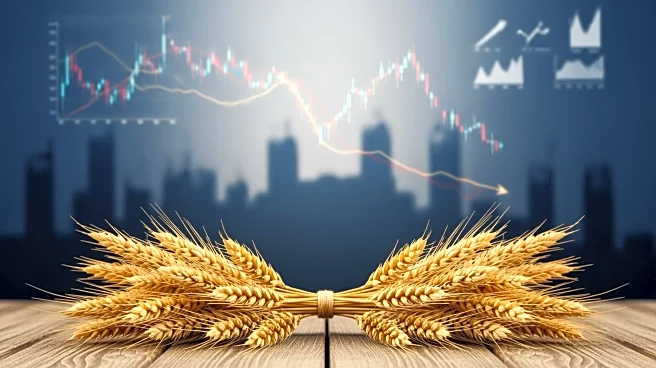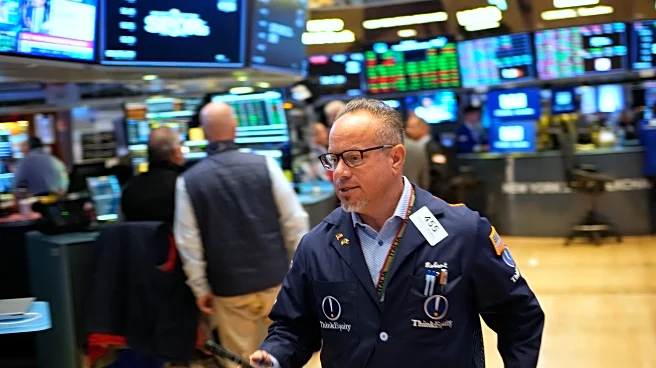What's Happening?
Soybean prices increased by more than 8 cents per bushel, reaching $11.15¾, as reported ahead of 9 a.m. CT. This rise comes amid fluctuations in other agricultural commodities, with corn slightly down and wheat experiencing mixed changes. Feeder cattle
and live cattle prices also saw significant increases, while lean hogs rose modestly. The broader market showed declines, with the S&P 500 and Dow Jones Industrial Average both down.
Why It's Important?
The rise in soybean prices reflects ongoing volatility in agricultural markets, influenced by factors such as weather conditions, global demand, and economic indicators. As soybeans are a key component in various industries, including food production and biofuels, price changes can impact supply chains and consumer costs. The increase in cattle prices suggests strong demand in the livestock sector, which could affect meat prices and related industries. Monitoring these trends is crucial for stakeholders in agriculture and food production.
What's Next?
Market participants will continue to watch for developments in commodity prices, as fluctuations can have significant implications for farmers, traders, and consumers. Factors such as weather patterns, trade policies, and economic conditions will play a role in shaping future price movements. Stakeholders may need to adjust strategies to mitigate risks associated with price volatility and ensure stable supply chains.














